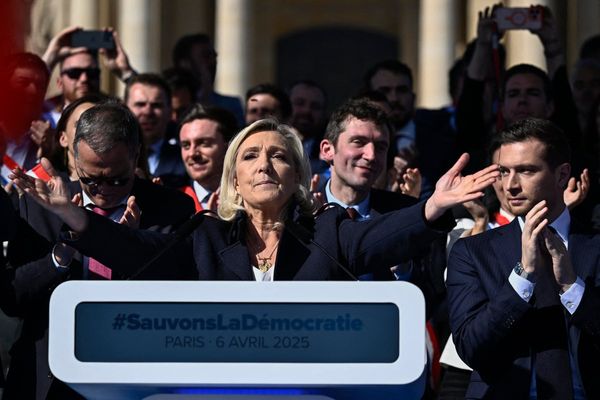Tensions have been mounting between Russia and Ukraine in recent weeks, amid strong opposition from Russia over Ukraine’s efforts to join Nato, the US-led military coalition.
Russian President Vladimir Putin has now granted formal recognition to Donetsk and Luhansk, two breakaway quasi-states in eastern Ukraine. The move has been condemned by the US, UK and European Union, which are now expected to respond with coordinated sanctions.
But the deterioration in relations between Russia and Ukraine has been ongoing for a number of years, and the relationship between the two countries is very complex.
Where is Ukraine?
Ukraine is located in eastern Europe. It shares borders with Belarus, Poland, Slovakia, Hungary, Romania and Moldova, as well as Russia.
Where are Russian troops and how close are they to Ukraine?
According to reports, Russia has deployed around 150,000 of its troops close to its border with Ukraine. This has prompted concerns that it could be a precursor to a ground invasion.
Since Russia has now granted formal recognition to Donetsk and Luhansk, it has also claimed the right to deploy troops to carry out “peacekeeping functions” in the breakaway regions.
Reports today (February 22nd) say that Russia has ordered troops into the two disputed territories, which have proclaimed themselves "people's republics".
What does Russia want from Ukraine?
Russia’s main demand of Ukraine is that it abandons its efforts to join Nato. Ukraine first applied to join Nato in 2008.
In addition, Moscow had called on Kyiv to grant a degree of autonomy to Donetsk and Luhansk. However, it has now recognised these entities as independent republics.
Armed militias claimed control of Donetsk and Luhansk in 2014, after the Maidan (or Euromaidan) protests unseated former Ukrainian president Viktor Yanukovych.
Russia also annexed Crimea, whose people are mostly Russian-speaking, that same year. It has a strategically important naval base there, on the Black Sea at Sevastopol.
Why is Ukraine important to Russia?
Ukraine shares a land border with Russia, and as a result, Moscow is particularly keen to keep it out of Nato - as it does not want the US-led alliance on its own doorstep.
Several other countries which were once part of the Soviet Union - which collapsed in 1991 - have since gone on to join Nato, prompting widespread resentment and fear in Russia.
When did Ukraine become an independent country?
Ukraine has been an independent country since 1991, when the Soviet Union - of which it was previously a member - ceased to exist.
Before the formation of the Soviet Union after the October Revolution in 1917, Ukraine had been part of Tsarist Russia’s empire.
Where are Donetsk and Luhansk?
Donetsk and Luhansk are located in eastern Ukraine. The two cities are controlled by Russian-backed militias and have proclaimed themselves “people’s republics”.
Russia has now granted these entities official recognition, a move which has been strongly condemned by the UK, US and EU.
Where is Crimea?
Crimea is a disputed territory in eastern Europe, along the northern coast of the Black Sea. Previously part of Ukraine, the territory was annexed by Russia in 2014.
A referendum was held in Crimea to determine the peninsula’s sovereignty, but its legitimacy was rejected by Ukraine and its allies - which include the UK, US and the European Union.
What does Nato stand for?
Nato stands for North Atlantic Treaty Organisation. It was founded in 1949, amid the worsening tensions of the Cold War.
During the Cold War, its main geopolitical rival was the Warsaw Pact - a military alliance led by the Soviet Union and composed of Communist-led countries.
Since the Soviet Union’s collapse in 1991, Nato has expanded into eastern Europe. Russia claims that this is contrary to assurances given by Nato to Soviet leaders in the early 1990s.
Who are the members of Nato?
Nato currently has 30 members. The full list of Nato member states and the years in which each joined are as follows:
Albania (2009)
Belgium (1949)
Bulgaria (2004)
Canada (1949)
Croatia (2009)
Czech Republic (1999)
Denmark (1949)
Estonia (2004)
France (1949)
Germany (1955)
Greece (1952)
Hungary (1999)
Iceland (1949)
Italy (1949)
Latvia (2004)
Lithuania (2004)
Luxembourg (1949)
Montenegro (2017)
Netherlands (1949)
North Macedonia (2020)
Norway (1949)
Poland (1999)
Portugal (1949)
Romania (2004)
Slovakia (2004)
Slovenia (2004)
Spain (1982)
Turkey (1952)
United Kingdom (1949)
United States (1949)
Will Ukraine join Nato?
Ukraine has been trying to join Nato since 2008, when it first submitted an application for membership.
However, the controversial nature of the application - and its potentially destabilising geopolitical consequences - has made some Nato members hesitant to admit Ukraine.
Despite Nato’s efforts to present a united front over Ukraine in public, reports suggest that France and Germany are both anxious about the potential implications of granting Kyiv full membership of the alliance.
Indeed, German Chancellor Olaf Scholz said in a recent joint press conference with Ukrainian President Volodymyr Zelensky that Ukraine’s membership was “practically not on the agenda” at present.
Scholz - whose country is heavily reliant on Russian gas to power its industries - added that it was important to “look at the reality” and work to ease tensions in the region.
What would happen if Russia invaded Ukraine - and will Nato defend Ukraine?
Nato’s Article 5 commits the alliance to mount a collective military response if one member state is invaded from outside.
However, as Ukraine is not currently a member of Nato, Article 5 would not automatically apply if a full-scale Russian invasion took place.
The prospect of a full-blown military conflagration with Russia, which could soon turn nuclear, is one that’s likely to give Western leaders serious pause for thought.
For more stories from where you live, visit InYourArea.







